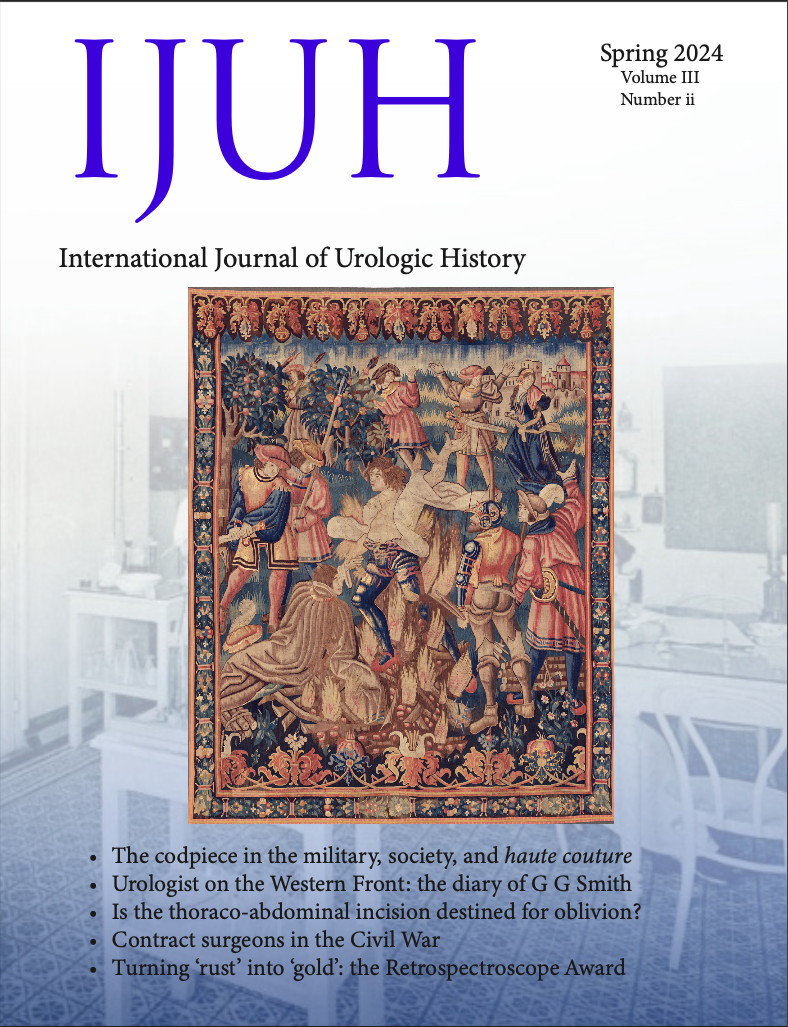IJUH
International Journal of Urologic History
The Plague Doctor, the Pandemic Doctor, and Surgical Protective Clothing
Alexis R. Steinmetz and Ronald Rabinowitz
First Published: Jan. 6, 2023
DOI: 10.53101/IJUH.2.2.01052304
Download PDF
Abstract
Objectives
Infectious diseases have tormented humans for thousands of years, and severe outbreaks have led to the devastation of entire communities. Even before globalization, parasites and pathogens traveled along trade routes with their human hosts. The protective clothing worn by physicians during epidemics serves as a powerful historical record chronicling accepted theories of disease transmission and treatments. The materials and designs of modern-day protective equipment reflect the contributions of surgeons to the ways doctors protected themselves and their patients during epidemics.
Methods
Historical texts and journal articles were reviewed regarding the history, epidemiology, and pathophysiology of epidemics of plague, influenza, and coronavirus.
Results
The Justinian Plague of the 540s CE was the first pandemic to be fully documented and began the long history of plagues through the Black Death of the Middle Ages. Believing that the etiology was foul-smelling bad air (miasma), doctors protected themselves by wearing dramatic head-to-toe coverings. Heavy boots, pants, long coats, gloves, and brimmed hats were made of leather sealed with animal fat. Most important was the infamous face mask with glass eye coverings and a long beak filled with aromatics intended to purify disease-causing vapors. An appreciation of droplet theory in the 19th century made beaked masks obsolete, replacing them with cloth face masks. Surgeons continued to pioneer the development of gloves and gowns, initially to protect themselves and later to protect their patients. Their outfits were worn by healthcare workers during the epidemics of the 20th century. Similar to the plague doctors, present-day physicians treating patients suffering from COVID-19 don themselves in head-to-toe protective outwear, although heavy leather and beaked-masks have long since been replaced by disposable fabrics and the N95 respirator.
Conclusions
The evolution of physicians’ protective clothing from the iconic beaked mask of the 17th century plague doctor to the hazmat-esque suits of the COVID-19 pandemic doctor reflects the substantial advancements in the detection, treatment, and containment of communicable diseases. Much of this is due to the dedicated efforts of surgeons to better safeguard their patients as well as protect themselves against diseases contained in bodily fluids.
Editor in Chief: John L. Phillips, MD
Journal Design: Akhil A. Saji, MD
DOI: 10.53101
US ISSN: 2769-2183
